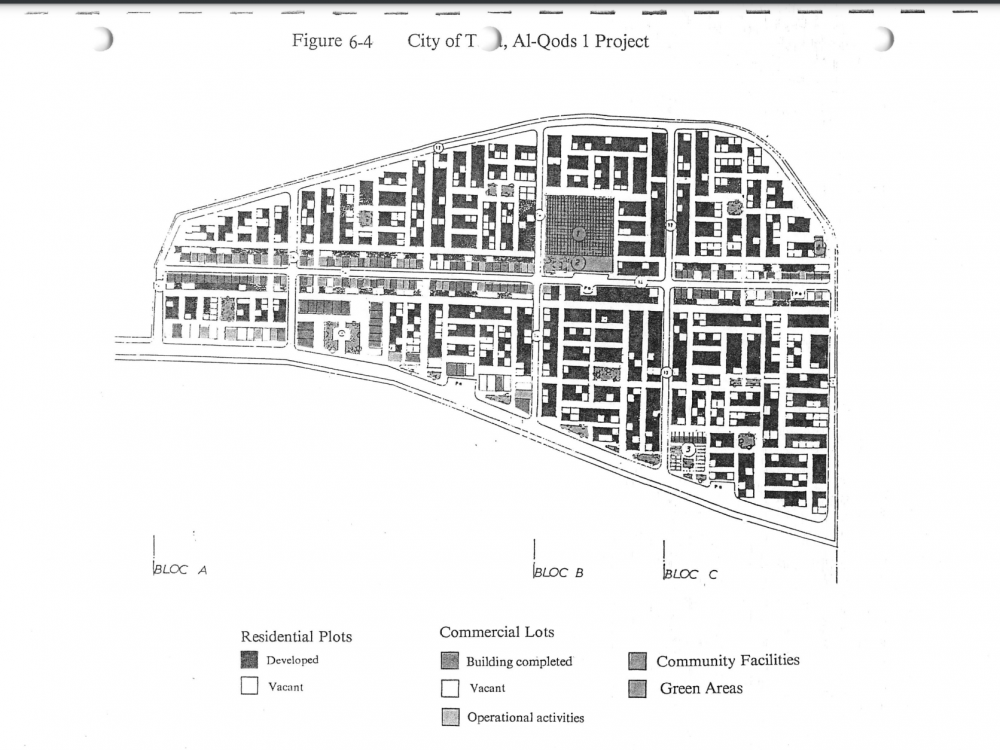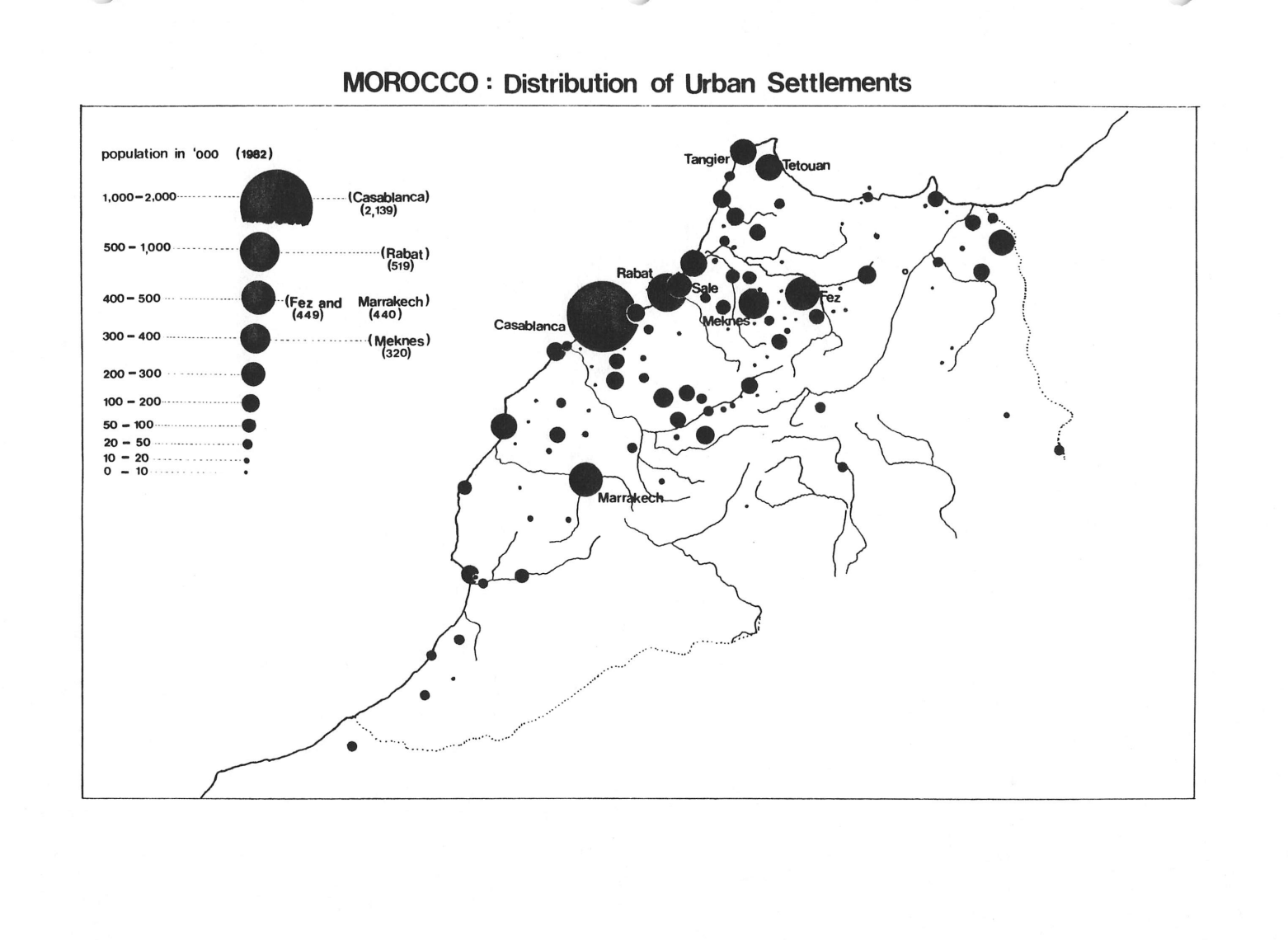Abstract
Curriculum components from the 2003 IEP (International Education Program) “Infrastructure and Partnerships for Local Economic Development,” which was held in Pretoria and Bloemfontein, South Africa in August and September 2003.
Documents include agendas, case studies, project summaries, and reference materials. Noted work by Mona Serageldin includes “Decentralization and Urban Infrastructure Management Capacity,” a background paper for the 2001 Third Global Report on Human Settlements.
Additional contextual documents include:
The “Best Practices 2001” submission for Middledrift, Eastern Cape, South Africa; an executive summary from May 2000 for the “Housing Microfinance Initiative”; a presentation of indicator reports by CUDS “Neighborhood Improvement Program, Neiva, Colombia”; and “Participant Evaluation and Comments” forms for the 2003 seminar participants.
See related I2UD projects below
| Project Year: | 2003 |
| Project Type: | IEP; Education |
| Geographic Regions: | Pretoria and Bloemfontein, South Africa (Program Locations) / Brazil / Boston, Massachusetts, US / South Africa / Bogotá, Colombia / Southwark, London, UK / Saint-Denis and Aubervilliers, France / Ahmedabad, India / Adjamé, Abidjan, Côte d’Ivoire / Szczecin, Poland |
| Reports: | |
| Authors: | CUDS Team |
| Sponsors: | Center for Urban Development Studies, Harvard University Graduate School of Design |
| Categories: | International Education Program; Education |
| ID: | 2003_08_001 |
Related I2UD Projects
A History of ITP and IEP Seminars
The International Training Programs (ITP) began in 1982, as 2-4 week long summer seminars held by the Unit for Housing and Urbanization (Harvard University) in Cambridge, MA. ITP curriculums were designed to strengthen the decision-making skills of senior professionals in public and private agencies responsible for urban development.
The I2UD Digital Library holds curriculum materials for ITPs from 1988, 1991, 1994, 1995, 1997 and 1998:
- ITP 1988: “Housing Affordability: Project Appraisal and Program Structure” with Boston Redevelopment Authority Site Visit and Documentation, 1988
- ITP 1991: Development Strategies for Urban Regeneration of Old Urban Fabric: Case Studies and Curriculum
- ITP 1994: Revitalization in Older Urban Spaces: Upham’s Corner, Dorchester, Boston, South Boston, New Haven (USA); Montpellier (France), Cork (Ireland), Case Studies and Curriculum
- ITP 1995: “Linking Economic and Physical Development Strategies Intergovernmental Responsibilities in the Context of Decentralization”
- ITP 1997: “South Boston Metropolitan Area Community Housing,” Case Studies and Curriculums, Boston, Massachusetts, 1997
- ITP 1998: “The Role of Public/Private Partnerships in Urban Improvements,” with Case Studies on Kreuzberg, Berlin (Germany), GIS Mapping on Cape Cod (US) and the Maarouf Quarter of Cairo (Egypt)
- International Training Programs (ITP): History Survey of Modules and Curriculum Materials, 1982-2000
The tradition of ITPs continued after 2000, when CUDS (a re-organization of the Unit) continued training seminars as “International Education Programs” (IEP) from 2000-2004:
- IEP 2000: “Boston, Massachusetts: Strategic Plans and Community Participation,” Case Studies and Curriculum
- IEP October 2000: “Seminar on Strategic Planning for Urban Revitalization and Local Development” in Pretoria, South Africa
- IEP 2000-2001: Seminar on Urban Planning and Local Economic Development for Romania (UPLED), for Oradea, Iasi and Focșani, Romania, 2001
- IEP May 2001: “Infrastructure Planning and Partnerships for Local Economic Development,” Eastern Cape, South Africa
- IEP August 2001: “Infrastructure Planning and Partnerships for Local Economic Development” in Pretoria, South Africa
Programs included inter-linked modules, lectures, case studies, interactive computer simulation models, site visits to urban projects, discussion groups and networking with professional counterparts from international metropolitan regions. Sessions had a modular format and structured team teaching, taught by a team of senior faculty and guest lecturers. Programs ended with a synthesis presented through a project evaluation exercise. Participants used case projects to examine strategies from the viewpoint of both public and private partners — to assess the feasibility and potential impacts of policies and projects on the community and the city. Presentations by guest speakers representing U.S. and international agencies, NGOs, and community groups were also integrated within the pedagogic framework of each module.
Related by – City or Community Case Studies
“Planning for Climate Adaptation Program” for Four Dominican Republic Municipalities: Santo Domingo National District, Santiago de los Caballeros, San Pedro de Macoris, and Las Terrenas, 2015
“National Urban Policies in Arab States,” Regional Assessment and Case Studies on NUPs in Egypt, Jordan, Morocco, Saudi Arabia and Sudan, 2014
“Arusha Urbanization Strategy and Urban Development Plan,” Development Strategy for Arusha Municipality, Tanzania, 2009-2012
ICLRD: Urban Reconciliation Case Studies for Public Housing Estates in Ireland and Northern Ireland, with Study Profile on the Basel Metropolitan Area, 2010-2012
Executive Training Course 2006: “Strategic Planning for Sustainable Infrastructure Development,” Workshop Curriculum with Case Studies, Pretoria, South Africa, 2006
IEP 2003: “Infrastructure and Partnerships for Local Economic Development” in Pretoria and Bloemfontein, South Africa, International Education Programs, 2003
IEP 2002: “Strategic Planning for Local Development & Urban Revitalization,” Program Overview, International Education Programs, 2002
Workshops on “Strategic Planning and Management of Municipal Infrastructure Programs,” from Review of Grant-Funded MIPs in South Africa, May-June 1999
“Housing Microfinance Initiatives,” Case Study for USAID Microenterprise Best Practices Initiative, 1999-2000
ITP 1998: “The Role of Public/Private Partnerships in Urban Improvements,” with Case Studies on Kreuzberg, Berlin (Germany), GIS Mapping on Cape Cod (US) and the Maarouf Quarter of Cairo (Egypt), 1998
“City of Szczecin Capital Improvement Program,” Case Studies for Technical Assistance Program, Szczecin, Poland, 1996
ITP 1994: “Revitalization in Older Urban Spaces,” Upham’s Corner, Dorchester, Boston, South Boston, and New Haven (US); Montpellier (France); and Cork (Ireland) with Case Studies, International Education Programs, 1994
“Introduction to Local Finances,” Teaching Monographs and Case Studies on Finance Management, by Visiting Lecturer David C. Jones, 1994-1999


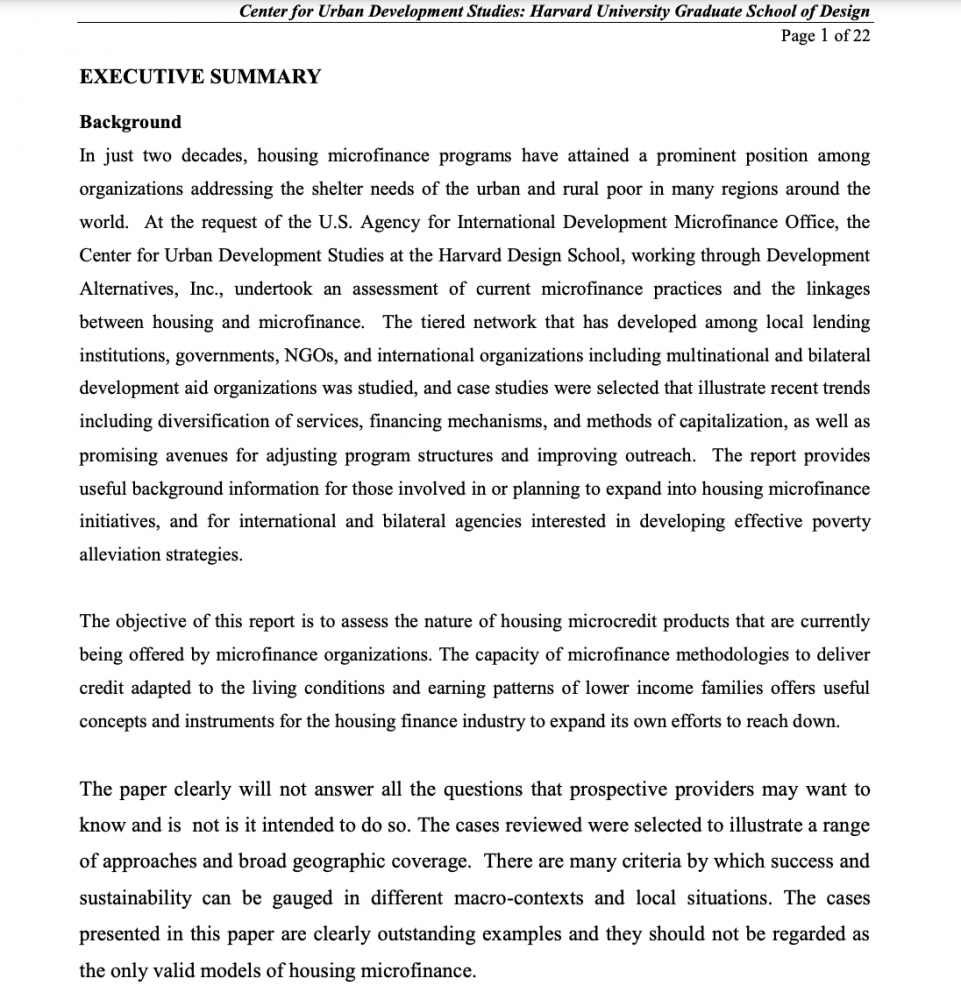


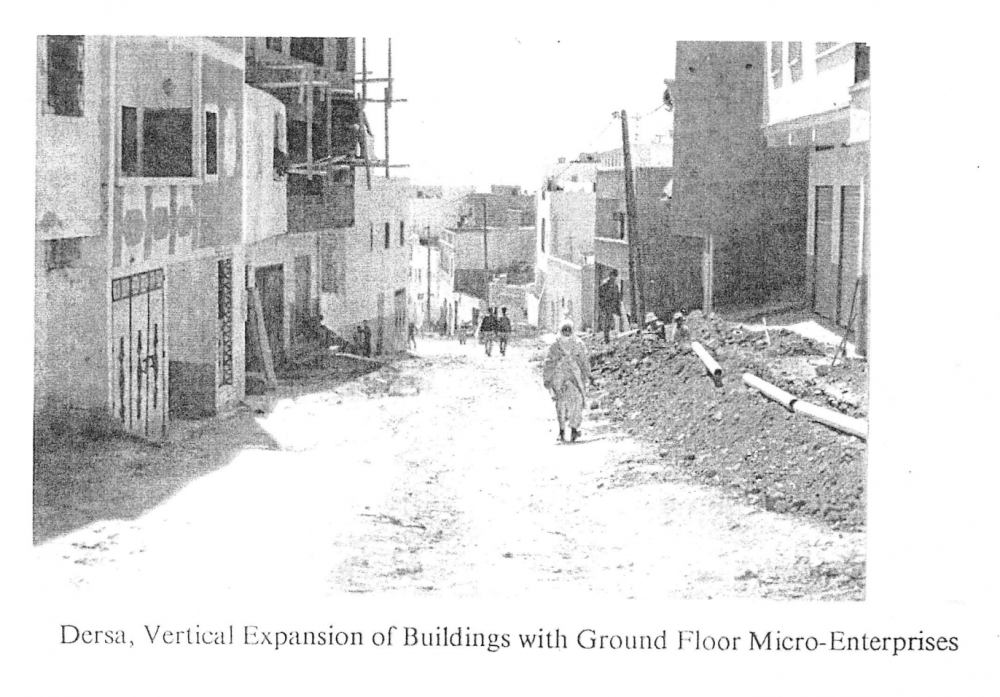
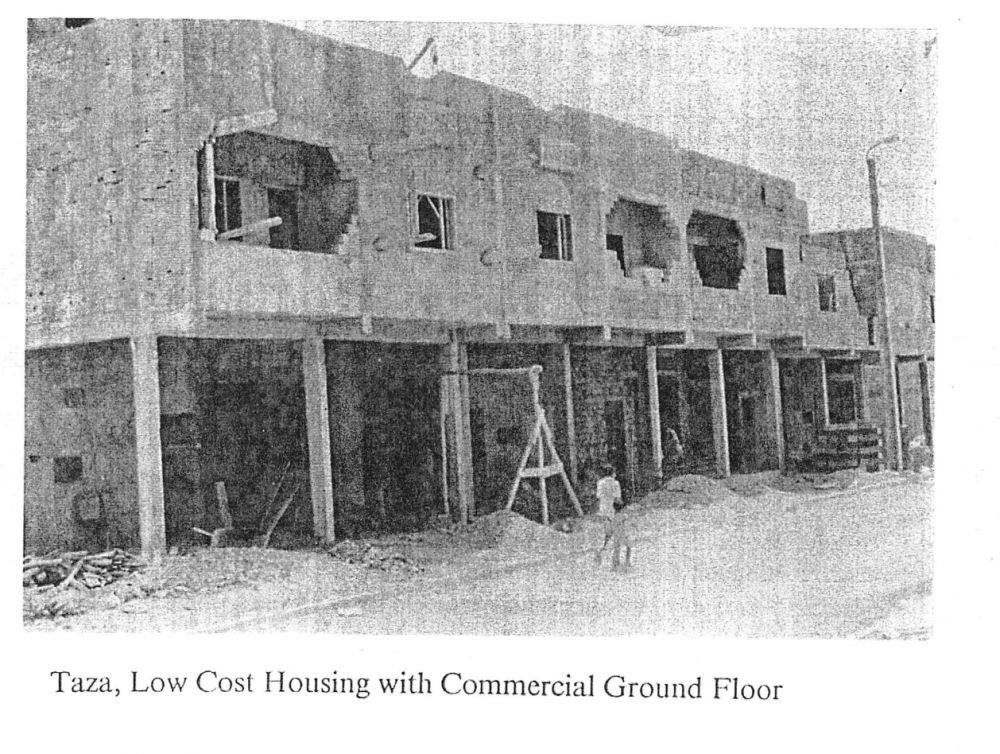 Taza, Low Cost Housing with Commercial Ground Floor
Taza, Low Cost Housing with Commercial Ground Floor